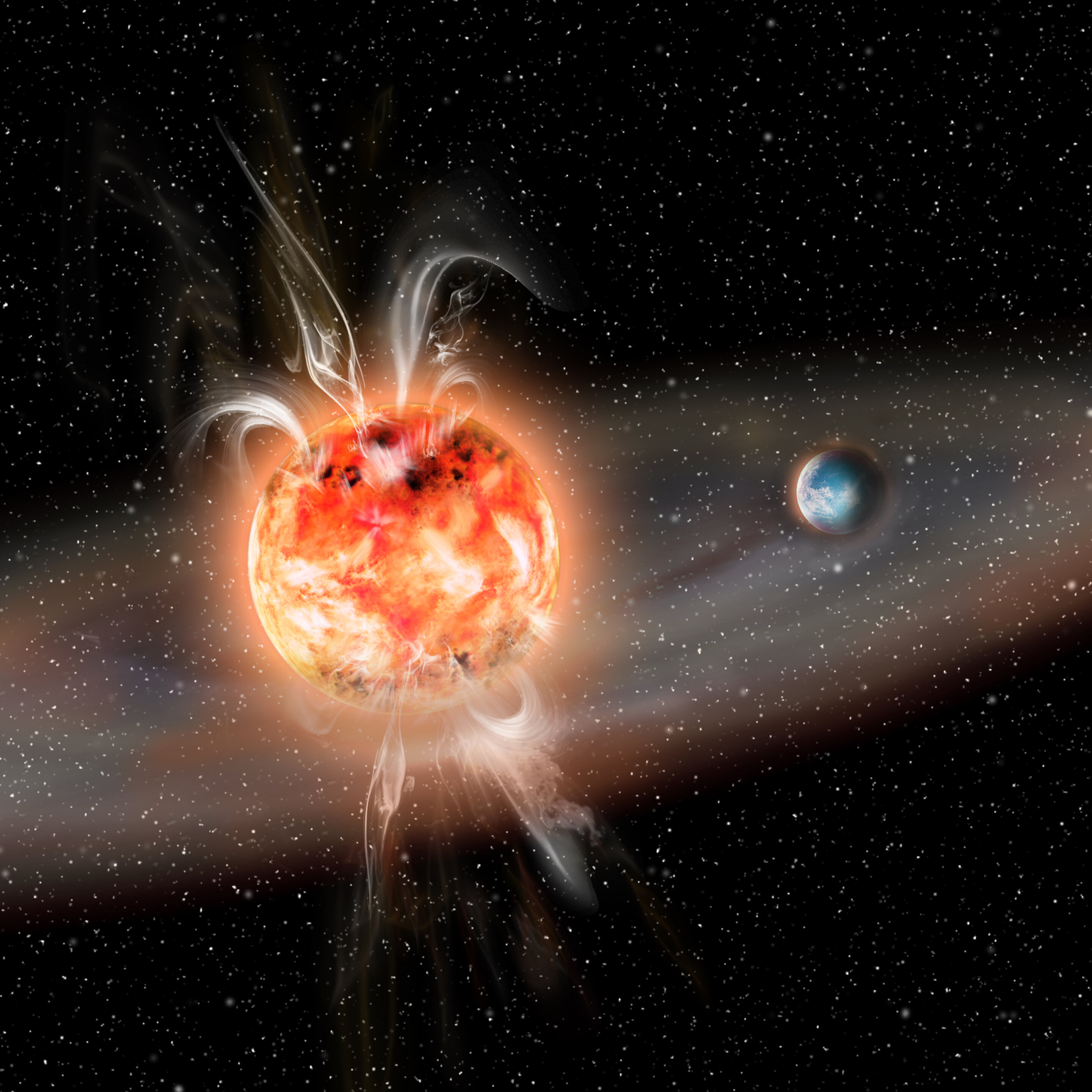
With last year’s extension, TESS continues its mission, collecting vast amounts of stellar data and helping us discover even more exoplanets, all in the name of finding that elusive habitable Earth 2.0 and maybe even extraterrestrial life. We all know that’s the end game. And while red giant stars are amazing, they’re also late-stage stars that have probably destroyed the nearest planets. Of far more interest to astrobiologists and SETI researchers are the more numerous and much smaller red dwarf stars. These stars can have planets much closer in, and the resulting dips in brightness due to transits are easier to measure as a result.
Except that the hypothesis for years has been that any planets orbiting close in to a red dwarf will be sterilized by the superflares from the star. Superflares are extreme bursts of radiation. Our Sun gives off flares as well, but because it’s larger and older, the Sun’s flares are less frequent and less intense than those of the very young, active red dwarfs. This is why scientists thought that life was unlikely on worlds around red dwarfs.
Once again, enter the TESS spacecraft. Scientists at the Leibniz Institute for Astrophysics Potsdam analyzed optical observations from TESS to understand just how and where these flares occur on the surface of the stars. What they found is good news for potential life in these systems. Graduate student and lead author Ekaterina Ilin explains: We discovered that extremely large flares are launched from near the poles of red dwarf stars, rather than from their equator, as is typically the case on the Sun. Exoplanets that orbit in the same plane as the equator of the star, like the planets in our own solar system, could therefore be largely protected from such superflares, as these are directed upwards or downwards out of the exoplanet system.
This work, published in MNRAS, also provides more evidence that sunspots and flares tend to form close to the poles of fast-rotating stars like these red dwarfs. The team found over 3000 red dwarf stars that had large flares recorded in the TESS observations. From those thousands of flares, they found four that worked with the analytical method they created, and those four stars had flares that occurred above 55 degrees latitude. That may seem like a very small data set, but the chances of finding four flares in a row at these latitudes are about one in 1,000, per the press release.
So maybe red dwarfs aren’t such a bad place to look for biosignatures and technosignatures after all. We’ll be curious to see where this avenue of research goes from here.
More Information
AIP press release
“Giant white-light flares on fully convective stars occur at high latitudes,” Ekaterina Ilin et al., 2021 August 5, Monthly Notices of the Royal Astronomical Society




 Join the Crew!
Join the Crew!
 Escape Velocity Space News
Escape Velocity Space News
0 Comments